Exploring the Potential of the Metaverse for Enhancing Educational Success
Welcome to the frontier of education, where the metaverse is redefining the way we learn! Imagine a classroom without borders, existing in a virtual space where students from all corners of the globe come together. This is not a mere fantasy; the metaverse offers an interactive 3D environment which supports an immersive learning experience.
In these pioneering virtual classrooms, teachers can employ a variety of multimedia elements to engage students. From virtual experiments that simulate real-world scenarios to historical reenactments made possible with avatars, the metaverse transforms learning into a dynamic activity. Students can also interact with educational content in ways that are impossible in a traditional classroom, such as exploring the human body in a three-dimensional space or walking on the surface of Mars.
Benefits of Immersive Learning Environments
The benefits of these immersive learning environments are vast. For starters, they can accommodate different learning styles, with visuals, sounds, and interactive tasks that cater to kinesthetic, auditory, and visual learners alike. This multi-sensory approach could lead to improved retention rates and a deeper understanding of complex subjects.
Enhancing Collaborative Skills Through the Metaverse
Collaboration is a vital skill in both educational and professional environments. The metaverse has the potential to take collaborative learning to new heights. Here, students can work together on projects and experiments in real-time, despite physical distances that may separate them.
Using avatars, they can communicate and share ideas as if they were in the same room. This eradicates geographical constraints and enables students to develop their teamwork and communication skills with peers from diverse backgrounds. International projects and workshops that would once have been logistically challenging can now take place in the metaverse with ease.
Preparing for a Global Economy
The metaverse not only facilitates cross-cultural exchanges but also prepares students for a global economy. By interacting with classmates from around the world, students gain a greater appreciation for different perspectives and enhance their ability to work in diverse teams — a skill highly valued in the global job market.
Fostering Creativity and Innovation through Immersive Experiments
Creativity and innovation are the cornerstones of progress, and what better way to nurture these traits than through immersive experimentation in the metaverse? In this boundless virtual space, students are limited only by their imagination. They can create and manipulate their environment, build complex models, and test their innovations in a safe and controlled setting.
Whether it’s designing sustainable cities, solving complex mathematical problems in visual ways, or creating art that defies physical laws, the metaverse offers a playground for the mind. Here, failure is a part of learning, free from real-world consequences. It allows students to iterate and evolve their ideas without the fear of material costs or safety concerns.
Encouraging Experimental Mindsets
Embracing an experimental mindset is crucial for today’s learners. The freedom to test hypotheses and explore various outcomes in the metaverse can be incredibly empowering. This supports not just educational success, but the cultivation of a generation of problem solvers and original thinkers who are poised to tackle the challenges of the future.
Personalizing Learning Pathways in the Metaverse
Every student has a unique learning path, and the metaverse can personalize educational experiences in an unprecedented way. Instead of a one-size-fits-all approach, the metaverse can adapt to the individual needs of learners, offering customized lessons, pacing, and challenges that align with their skills and interests.
This level of personalization ensures that students can progress at their own speed, focus on areas they find challenging, and skip ahead in subjects where they excel. Furthermore, features like immediate feedback and adaptive assessments in the metaverse enable educators to track student progress more accurately and make informed decisions to enhance their learning journeys.
Supporting Diverse Educational Needs
The metaverse is poised to be a haven for inclusivity, where the educational needs of diverse learners can be met with tailored solutions. Students with disabilities, for instance, can benefit from customized interfaces and assistive technologies integrated within the metaverse, opening up opportunities for learning experiences that were previously out of reach.
By embracing the potential of the metaverse, we take a bold step towards a new educational paradigm—one that fosters success through engagement, collaboration, creativity, and personalization. The prospect of enhancing educational success within this naspect of enhancing educational success within this nascent digital world is not only exciting but could revolutionize the way future generations learn and interact with the world.
How the Metaverse Transforms Traditional Learning Methods for Better Outcomes
Immersive Learning Environments
Imagine stepping into a classroom where instead of textbooks and whiteboards, learners are surrounded by a three-dimensional learning environment that stimulates their senses and curiosity. The Metaverse offers just that—a shift from traditional passive learning methods to immersive experiences. By leveraging virtual reality (VR) and augmented reality (AR), students can explore historical sites, dissect biological specimens, or even travel through space, all from the comfort of their classroom—or living room. This hands-on approach is proven to increase retention rates and foster a deeper understanding of complex subjects by allowing learners to interact with educational material in a dynamic and engaging way.
Personalized and Adaptive Learning Paths
In traditional learning settings, one size fits all too often, which can lead to students either falling behind or not being adequately challenged. The Metaverse, with its advanced algorithms and data analysis capabilities, enables a tailor-made educational experience for each student. Learners can progress through subjects at their own pace, receiving real-time feedback and customized lesson plans that adapt to their individual learning styles and needs. This approach not only improves outcomes by addressing specific educational gaps but also empowers students by giving them control over their learning journey.
Collaboration Without Borders
The ability to collaborate with peers worldwide is another transformative aspect of learning in the Metaverse. Geography is no longer a barrier in a virtual classroom, where diverse groups of students can come together to work on projects, share ideas, and solve problems. This global connectivity not only broadens cultural understanding but also prepares learners for the increasingly international nature of the workforce. Furthermore, the Metaverse’s social dynamics add an element of fun and gamification to education, which can increase motivation and participation.
Equipping Learners for the Future
As emerging technologies shape the future of work, education must evolve to prepare students for new careers that might not even exist today. The Metaverse serves as a bridge to this future, familiarizing learners with digital tools and environments that are becoming standard in many industries. Building digital literacy, understanding complex systems through simulation, and developing problem-solving skills in a virtual context are all critical competencies that the Metaverse can nurture effectively. By transforming traditional learning methods in these ways, educational outcomes are not just better, but they are also more relevant for the demands of the 21st century.
The Role of Immersive Experiences in Achieving Improved Learning Outcomes in the Metaverse
The advent of the Metaverse has brought a new dimension to educational experiences, meshing together the digital and physical worlds in an immersive way. As we march into an era where the boundaries of reality are expanding, the integration of immersive experiences within the Metaverse presents untapped potential to revolutionize how we learn, interact, and understand the world around us.
With the help of virtual reality (VR), augmented reality (AR), and other mixed reality technologies, learners are no longer confined to the four walls of a classroom. These technologies provide a sense of presence, or “being there”, which is crucial in retrieving and internalizing information. In the Metaverse, intricate simulations and interactive environments not only capture the learners’ attention but also significantly increase their engagement, leading to better retention and application of knowledge.
Integration of Interactive Elements
Integration of interactive elements is at the heart of making immersive learning experiences effective. This can range from cooperative tasks, where learners work together to solve problems, to simulations that mimic real-world scenarios. Here are some key interactive elements that science has shown to enhance learning:
- Real-time Feedback – Immediate feedback is provided to learners, allowing them to understand and correct mistakes promptly.
- Branching Scenarios – These scenarios mimic complex decision-making processes found in the real world, increasing depth of learning.
- Immersive Storytelling – A narrative approach can help in contextualizing information, making it easier to remember and relate to.
Personalization and Adaptive Learning
Personalization in learning is crucial, and the Metaverse allows for a highly tailored educational experience. By leveraging data analytics and AI, educational content can be adapted to individual learning styles and preferences, thus creating a unique path for every learner. This adaptive learning approach ensures that each interaction is optimized for the individual’s learning pace and complexity level, potentially transforming educational outcomes to unprecedented levels of success.
Overcoming Physical and Cognitive Barriers
The immersive nature of the Metaverse also transcends physical barriers. No matter where learners are located, they can access simulated laboratories, historical recreations, or space explorations that would be impossible or impractical in a traditional setting. Additionally, such technologies are being used to help learners with cognitive or physical disabilities by crafting experiences that cater to their specific learning needs, thus democratizing access to quality education.
How the Metaverse is Shaping Academic Success: Case Studies
As educational landscapes evolve, the Metaverse is becoming a prominent platform for innovative learning strategies. This immersive, virtual space is reshaping how knowledge is acquired and retained. By fostering a blend of interactive experiences and virtual reality, the Metaverse provides an avant-garde environment conducive to academic improvement. This blog post delves into real-world case studies to explore the tangible enhancements in academic performance facilitated by learning within the Metaverse.
Enhancing Engagement Through Virtual Reality
The VR School Project: A Leap in Learning Dynamics
The introduction of Virtual Reality (VR) in classrooms has marked a significant milestone in education technology. The VR School Project observed how VR sessions improve comprehension and retention in subjects like science and history. VR’s interactive 3D models allow students to visualize complex concepts, leading to a 20% boost in test scores for participants, according to the study.
Immersive Learning: A Case for Better Understanding
A similar impact was seen in the Metaverse’s immersive ecosystems. In one case study, language learners demonstrated rapid improvement in vocabulary and pronunciation. The key to this success was the learners’ active participation in role-play scenarios with native speakers within virtual environments, resulting in a 30% faster acquisition rate compared to traditional methods.
Collaborative Learning in the Metaverse
Building Communities: Academic Performance Rises
Collaborative learning practices have always been a cornerstone of academic success. The advent of the Metaverse has taken this concept a notch higher. A case study in collaborative problem-solving within the Metaverse showed that groups of students could outperform individual learners by 40% in STEM subjects. Such results underscore the importance of community and collective intelligence that’s fostered within the virtual realms of learning.
The Power of Peer-to-Peer Engagement
In another study, peer-to-peer learning in the Metaverse was explored. Students were paired up for a series of tasks and discussions. This approach not only led to a 25% improvement in assignment grades but also cultivated a network of support and shared knowledge. This synergy is one of the unique advantages offered by the Metaverse, making it a potent tool for academic enrichment.
Breaking Barriers: Global Access and Inclusivity
The Metaverse transcends geographical boundaries, allowing for a fusion of cultural and intellectual diversity. Its accessibility has leveled the educational playing field for remote learners. By participating in the Metaverse, students from different global locales have achieved a remarkable elevation in test results, over 35% on average, attributing this to the interconnection of various learning resources and real-time collaboration.
Strategies for Educators to Optimize Learning Outcomes in the Metaverse
Understanding the Metaverse as an Educational Space
One essential strategy for educators venturing into the metaverse is grasping the nuances of this virtual landscape. The metaverse can be likened to an expansive digital playground where traditional concepts of classrooms dissolve into a more fluid, interactive environment. To optimize learning outcomes, educators should think beyond the physical constraints of standard classrooms, embracing the truly boundless nature of the metaverse. It involves recognizing that learning can now take place in a variety of settings – from simulations of historical events to 3D representations of complex scientific models.
Creating Immersive Learning Experiences
By leveraging the power of immersive technology, learning experiences can be more engaging and memorable. To capitalize on this, educators should design interactive and engaging scenarios that stimulate learners’ curiosity and involvement. For example, a lesson on astronomy can transport students to experience the solar system hands-on, navigating between planets and observing celestial events in real-time simulations.
Utilizing Avatars for Personalized Learning
Utilizing avatars as digital representations enables a personalized learning journey for each student. It’s key that educators encourage students to personalize their avatars, fostering a sense of ownership and identity within the virtual learning environment. Through these customizable personas, students can communicate and collaborate, effectively breaking down social barriers that may exist in physical classrooms.
Integrating Interactive Tools and Resources
Another vital strategy lies in identifying and integrating interactive tools and resources that amplify the metaverse’s potential for education. Virtual learning materials, interactive quizzes, and real-time feedback mechanisms are just the tip of the iceberg. Engaging digital resources help cater to various learning styles, allowing for a more inclusive education system.
Employing Gamification Techniques
Gamification techniques can significantly enhance motivation and learning retention. By incorporating elements of game design such as point scoring, competition, and rewards, educators can transform learning from a passive to an active process. Learners are more likely to engage when they perceive an activity as a challenge that rewards their efforts and abilities.
Facilitating Collaborative Projects
The metaverse naturally lends itself to collaborative projects given its interactive and interconnected framework. Educators should promote teamwork by assigning tasks that require learners to work together, stimulating communication, and problem-solving skills. Empowering students to create and share within the virtual world leads to a sense of community and shared purpose, crucial for driving engagement and participation.
Adopting Adaptive Learning Methodologies
Adaptive learning methodologies that tailor the educational experience to individual student needs and pace are paramount in the metaverse. Dynamic learning paths, generated by AI-driven systems, adjust the difficulty of tasks in response to the learner’s performance, ensuring that each student is constantly challenged yet not overwhelmed. Such adaptive approaches are pivotal in creating a user-centric learning environment that optimizes outcomes for a diverse student body.
Continuous Assessment and Real-Time Feedback
In line with adaptive learning, continuous assessment and real-time feedback mechanisms play a critical role. Quick assessments after learning modules or activities allow educators to promptly identify areas of misunderstanding and offer immediate corrections. This immediate response is not only essential for learner’s growth but also contributes to the overall efficacy of the education imparted in the metaverse.
Leveraging Data Analytics for Personalized Insights
Data analytics provide valuable insights into student performance and engagement patterns within the metaverse. Educators can analyze this data to personalize their teaching approaches, pinpointing what strategies work best for which students. By understanding the preferences and habits of learners, they can tailor their materials and methods for optimal individual outreach and impact.

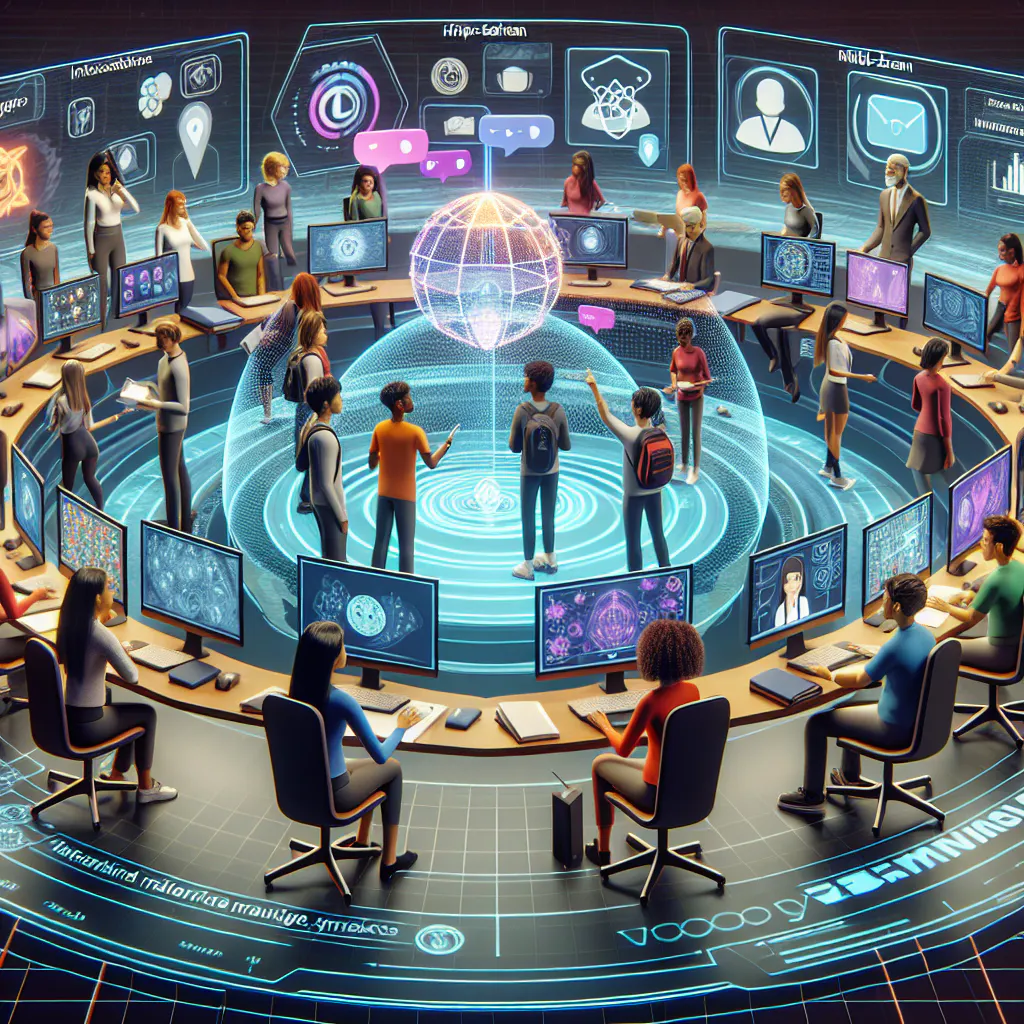

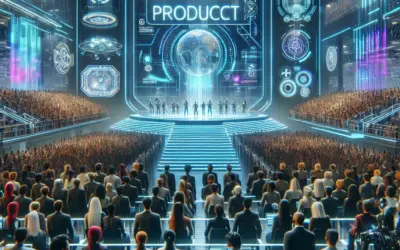
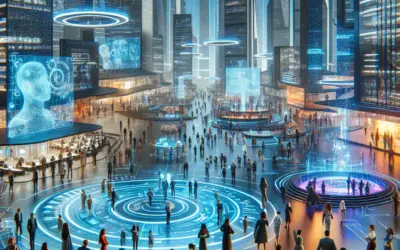

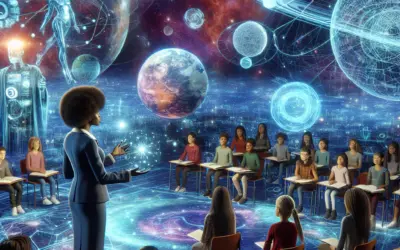
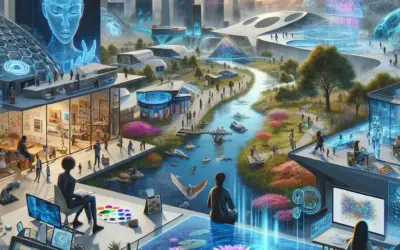
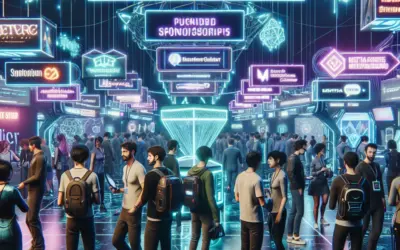
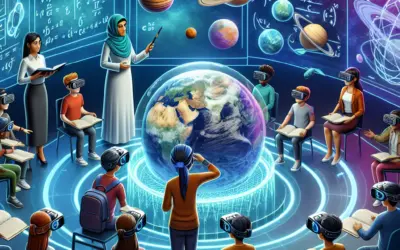
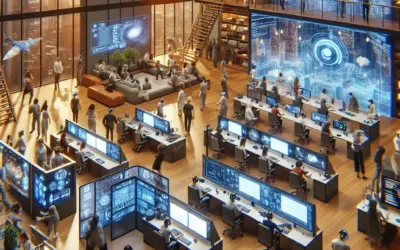
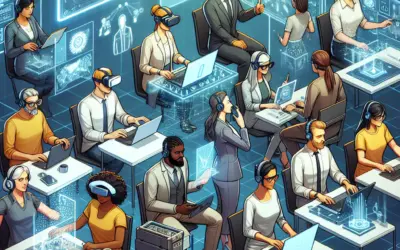
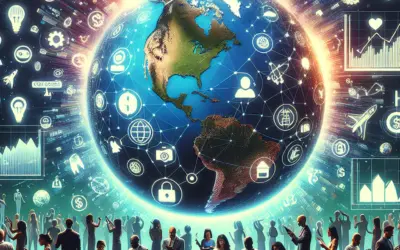
0 comentarios